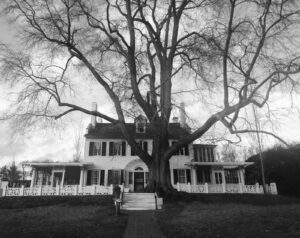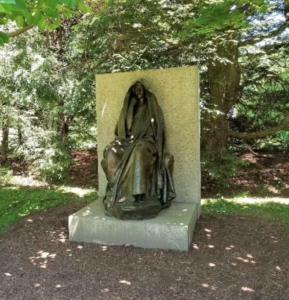The Cornish Colony: A Haven for Artists in New Hampshire
The Cornish Colony: A Haven for Artists in New Hampshire
Written by Thomas Freilich on June 26, 2023.
Nestled in the picturesque landscape of New Hampshire’s Sugar River region, the Cornish Colony stands as a testament to the rich artistic history of the region. This historical site, once a vibrant gathering place for prominent artists and intellectuals, continues to inspire visitors with its scenic beauty and artistic legacy.

Image credit: Julie B. / Unsplash
The Birth of the Cornish Colony
In the late 19th century, Cornish, a charming village in Sullivan County, New Hampshire, became an artistic haven for renowned painters, sculptors, writers, and musicians. Inspired by the natural beauty of the area, prominent figures like Maxfield Parrish, Augustus Saint-Gaudens, and Willard Metcalf established the Cornish Colony. Augustus Saint-Gaudens initially rented a house from his friend Charles Beaman, a prominent New York lawyer who owned property in Cornish. With a breathtaking view of Mt. Ascutney as his backdrop, Saint-Gaudens found the environment compelling for his artistic pursuits. He brought his family and assistants, and soon other creatives were drawn to the area. The painter Thomas Dewing, who arrived in 1885, played a pivotal role in attracting more artists to Cornish with his words of praise. Eventually, a community of around 100 artists, sculptors, writers, designers, and politicians lived there full-time or spent their summers in the Cornish Colony.

Marion Adams Memorial entitle “The Mystery of the Hereafter.” Image credit: University of New Hampshire Cooperative Extension
The Grand Masque: A Spectacle of Artistic Collaboration
In 1905, the artists of the Cornish Colony organized a grand-scale play to honor the Saint-Gaudens’ twentieth anniversary in Cornish. This monumental event was titled “A Masque of ‘Ours, The Gods and The Golden Bowl.” This outdoor performance drew inspiration from late Renaissance plays. With contributions from writers, actors, and musicians within the Colony, the masque became a testament to their collective talents and strong friendships. Sixty-five members of the Colony donned costumes as Greek gods and goddesses, with Saint-Gaudens himself making a grand entrance on a chariot.

Robert Gould Shaw and the 54th Regiment Memorial. Image credit: University of New Hampshire Cooperative Extension
The Legacy Lives On
After the death of Augustus Saint-Gaudens in 1907, the community’s artists began to slowly leave until the Cornish Colony was no longer. Despite its heyday having passed, its influence continues to resonate. Today, visitors can experience the area’s artistic heritage through a variety of activities. The Saint-Gaudens National Historic Park, dedicated to the renowned sculptor, offers visitors a glimpse into his creative process. You can explore the historical site’s homes and studios that once belonged to the Colony’s luminaries. Marvel at his sculptures and explore his picturesque gardens, which provide a serene backdrop for his masterpieces. Attend summer concerts, theater performances, and art exhibitions that celebrate the region’s cultural heritage. Take part in workshops and classes offered by local artists, allowing you to tap into your own creativity while honoring the Colony’s legacy.
The rolling hills, meandering rivers, and rustic charm of the village have been immortalized on canvas, capturing the essence of the Colony’s artistic spirit. You can even take advantage of the over 100 acres of the historical site that is forested through its many nature trails to experience the same landscapes that captivated the likes of artists such as Thomas Dewing and Kenyon Cox.
The Cornish Colony in New Hampshire stands as a testament to the enduring power of art and nature. This unique enclave of creativity has left an indelible mark on the region’s cultural landscape, inspiring artists and visitors alike. From exploring historic sites to immersing oneself in the natural splendor that once captivated the Colony’s residents, a visit to the Cornish Colony promises an enriching experience that combines art, history, and the beauty of the Sugar River Region.